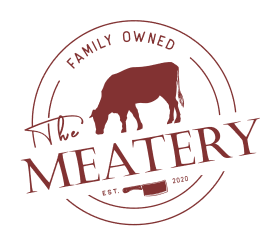Wagyu beef, literally meaning "Japanese cow" (wa = Japanese, gyu = cow), represents the pinnacle of luxury beef production. This prestigious meat originates from specific breeds of Japanese cattle, including the famous Japanese Black (Kuroge), Japanese Brown (Akage), Japanese Shorthorn (Nihon Tankaku), and Japanese Polled (Mukaku).
The history of Wagyu dates back to the 2nd century when cattle were first introduced to Japan. Initially used as draft animals in agriculture, these cattle developed unique genetic characteristics over centuries of isolated breeding. The Japanese government strictly protected these bloodlines, leading to the development of cattle known for their intense marbling, tenderness, and distinctive flavor profile.
What truly sets Wagyu apart is its remarkable intramuscular fat marbling, known as "shimofuri" in Japanese. This marbling creates a unique web-like pattern throughout the meat, resulting in an extraordinarily tender and flavorful eating experience. The fat in Wagyu beef has a lower melting point than that of regular beef, typically around 77°F (25°C), allowing it to literally melt in your mouth.
Today, authentic Japanese Wagyu remains strictly regulated, with only certain bloodlines certified as genuine Wagyu. The most famous variety is Kobe beef, which comes from Japanese Black cattle raised in Hyogo Prefecture under strict guidelines. However, Wagyu is now also raised in other countries, including Australia, America, and parts of Europe, though these variants often have different characteristics from their Japanese counterparts.
Which is better, Angus or Wagyu?
The comparison between Angus and Wagyu beef often sparks debate among meat enthusiasts. While both are premium beef options, they offer distinctly different experiences. Angus beef, particularly Black Angus, is known for its consistent quality, good marbling, and robust beef flavor that Americans have come to love.
Wagyu, however, typically surpasses Angus in several key areas:
- Marbling Level: Wagyu contains significantly more intramuscular fat, often scoring higher on marbling scales
- Tenderness: The unique fat distribution makes Wagyu more tender than Angus
- Flavor Complexity: Wagyu offers a more complex, buttery flavor profile
- Fat Quality: Wagyu fat has a higher percentage of monounsaturated fats
However, the "better" choice ultimately depends on personal preference and intended use. Angus beef is excellent for traditional steakhouse-style dishes and offers great value for quality. Wagyu, while more expensive, provides an unparalleled luxury dining experience with its exceptional tenderness and unique flavor profile.
Is Wagyu healthier than regular beef?
While it might seem counterintuitive given its high fat content, Wagyu beef actually offers several health advantages over regular beef. The key lies in its unique fat composition and distribution.
Wagyu beef contains higher levels of beneficial fatty acids compared to regular beef:
- Higher concentrations of monounsaturated fats, particularly oleic acid
- More omega-3 and omega-6 fatty acids
- Greater amounts of conjugated linoleic acid (CLA)
These beneficial compounds contribute to various health benefits, including potential improvements in cardiovascular health, anti-inflammatory properties, and better fat metabolism. The mono-unsaturated to saturated fat ratio in Wagyu is higher than in regular beef, making it a potentially healthier choice for fat consumption.
What do they feed wagyu cows?
The feeding process for Wagyu cattle is meticulously controlled and varies between regions and producers. In Japan, traditional Wagyu feeding programs typically include:
- Early Stage: Mother's milk and grass
- Growing Stage: High-quality grass, rice straw, and specially formulated concentrate
-
Finishing Stage: Carefully balanced diet of grains, including:
- Rice straw
- Whole crop silage
- Corn
- Barley
- Soybean meal
The feeding process is carefully controlled to ensure optimal fat marbling development. Contrary to popular myths, Wagyu cattle are not fed beer or given massages as standard practice, though some farmers may incorporate these techniques.
What's fancy about Wagyu?
Wagyu beef's prestigious status comes from several unique characteristics that set it apart from other premium beef:
- Exceptional Marbling: The intricate web of intramuscular fat creates unparalleled tenderness
- Genetic Purity: Strict breeding controls maintain bloodline authenticity
- Limited Availability: True Japanese Wagyu is rare and highly regulated
- Superior Texture: The low melting point of Wagyu fat creates a unique "melt-in-your-mouth" experience
- Complex Flavor Profile: Offers a rich, buttery taste with umami notes
The intensive care, strict regulations, and limited production contribute to its high price and luxury status.
How To Cook Wagyu
Cooking Wagyu beef requires special attention to preserve its unique qualities:
-
Preparation:
- Bring to room temperature (30-60 minutes before cooking)
- Season simply with salt and pepper
-
Cooking Method:
- Use high heat for searing
- Cook for shorter periods than regular beef
- Aim for medium-rare to medium
-
Resting:
- Rest for 5-10 minutes before cutting
- Slice against the grain
The goal is to allow the unique fat to render properly while maintaining the meat's natural flavors and textures.









